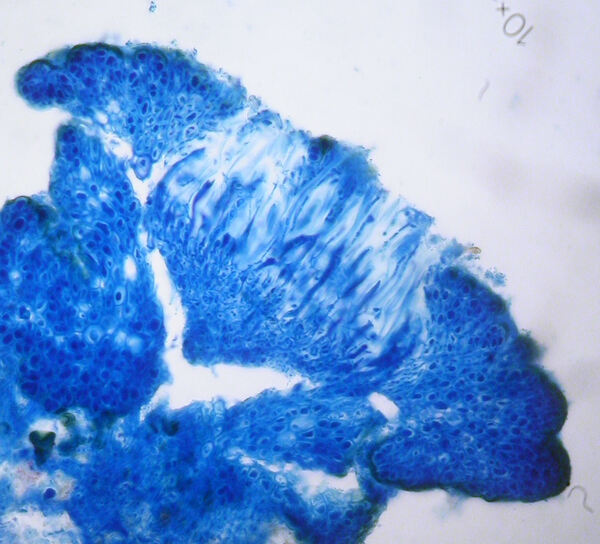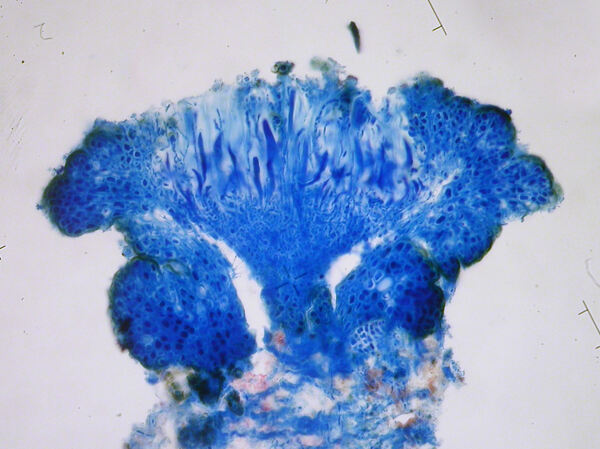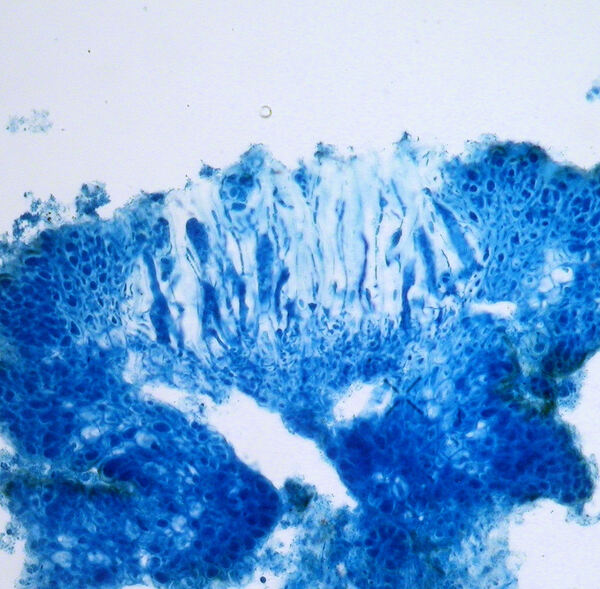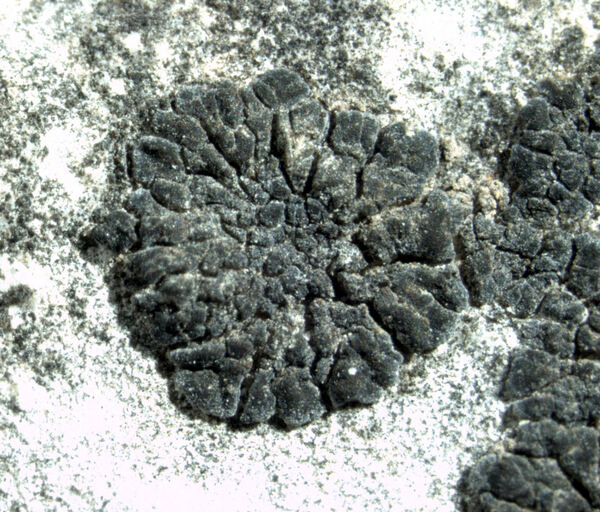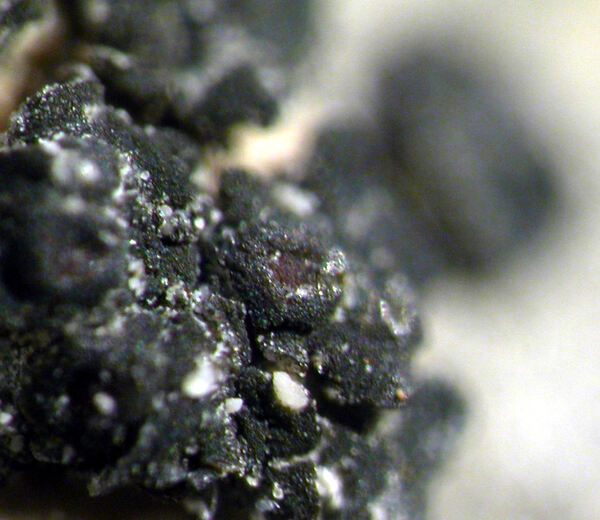Forssellia affinis (A. Massal.) Zahlbr.
Nat. Pflanzenfam., 1(1*): 161, 1906.. Basionym: Enchylium affine A. Massal. - Mem. Lichenogr.: 94, 1853.
Synonyms: Enchylium affine var. melanophaeum A. Massal.; Enchylium affine var. pulvinatum A. Massal.; Enchylium flageyi Harm.; Enchylium rubbianum A. Massal.; Heppia adriatica Zahlbr.; Heppia purpurascens (Nyl.) Nyl.; Heppia tenebrata Nyl.; Lecanora purpurascens Nyl.; Pterygiopsis affinis (A. Massal.) Henssen
Distribution: N - VG (TSB 5759), Frl (TSB 16744), Ven (Lazzarin 2000b), TAA, Piem (Isocrono & al. 2004), Lig. C - Tosc (Ongaro & al. 2018), Marc (Ravera & al 2018), Umb (Ravera & al. 2018), Laz (TSB 17640), Abr (Nimis & Tretiach 1999), Sar (Vezda Lich. Rar. Exs. 355). S - Camp (Nimis & Tretiach 2004), Pugl (Nimis & Tretiach 1999, Schultz 2006), Bas (Ravera & al. 2018).
Description: Thallus crustose-placodioid, episubstratic, rimose-areolate, black when dry (sometimes bluish-pruinose), dark olive-brown and weakly subgelatinous when wet, forming up to 2 cm wide, orbicular to irregular rosettes, Areoles 0.4-0.7 mm wide, c. 0.2 mm thick, separated by thin fissures, the central ones often reduced to wart-like granules, the peripheral ones distinctly elongated and radiating, up to 0.8(-0.9) x 0.3-0.5 mm, contiguous or slightly diverging at tips, slightly concave to slightly convex, sometimes poorly evident in old thalli. Thallus anatomy paraplectenchymatous throughout, with short-celled, 3-9 µm thick hyphae arranged in a fan-like way. Apothecia zeorine pycnoascoarps, at first immersed, then emerging and semi-sessile, round, 0.25-0.5 mm across, with a concave to flat, dark reddish disc and a thick, persistent, sometimes minutely granulose proper margin. Proper exciple well-developed, cupuliform, prosoplectenchymatous, up to 25 µm thick; epithecium brownish, poorly differentiated; hymenium colourless, in mature apothecia subdivided into separate compartments by bundles of sterile hyphae, 100-130 µm high, I+ and K/I+ blue; paraphyses anastomosing, slightly constricted at septa in upper part, 2-3 µm thick, not capitate; hypothecium colourless, 30-50 µm high. Asci 16-32-spored, prototunicate, with a very thin wall disintegrating or opening by apical ruptures, without apical amyloid thickenings, Lichina-type. Ascospores 1-celled, hyaline, subglobose to broadly ellipsoid, (5-)6-12 x 3-6(-7) µm. Pycnidia immersed, unilocular or rarely secondarily plurilocular, 80-120 µm wide. Conidia globose or subglobose, 2-3 x 1.5-2 µm. Photobiont cyanobacterial, chroococcoid, with vertically arranged clusters of cells measuring 6-10 x 5-7 µm, penetrated by haustoria and surrounded by a yellowish brown gelatinous sheath. Spot tests: all negative. Chemistry: without lichen substances.
Note: on periodically wetted surfaces of calcareous or siliceous rocks, especially along sun-exposed seepage tracks.
Growth form: Crustose
Substrata: rocks
Photobiont: cyanobacteria, coccaceous (e.g. Gloeocapsa)
Reproductive strategy: mainly sexual
On otherwise dry surfaces with short periods of water seepage after rain
Commonnes-rarity: (info)
Alpine belt: absent
Subalpine belt: absent
Oromediterranean belt: absent
Montane belt: very rare
Submediterranean belt: rare
Padanian area: absent
Humid submediterranean belt: very rare
Humid mediterranean belt: rare
Dry mediterranean belt: rather rare

Predictive model
Herbarium samples
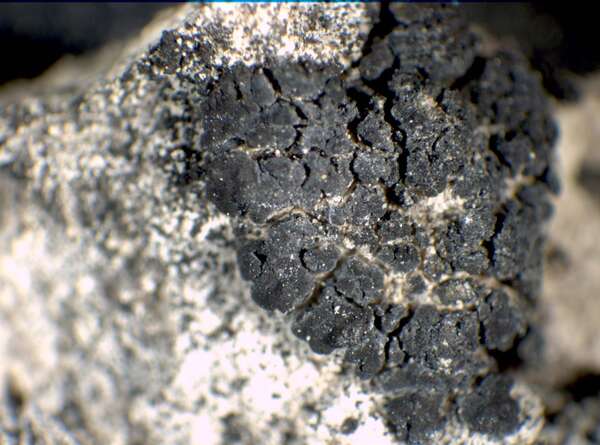

P.L. Nimis; Owner: Department of Life Sciences, University of Trieste
Herbarium: TSB (30596)
2001/12/10
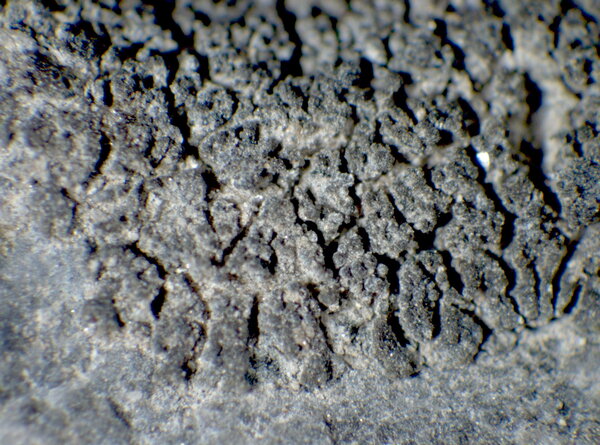

P.L. Nimis; Owner: Department of Life Sciences, University of Trieste
Herbarium: TSB (34674)
2002/02/01
a form with pruinose, pseudoisidiate thallus, which probably belongs to another species

Silvia Ongaro - CC BY-SA 4.0; Owner: Department of Life Sciences, University of Trieste
Herbarium: TSB (30588)
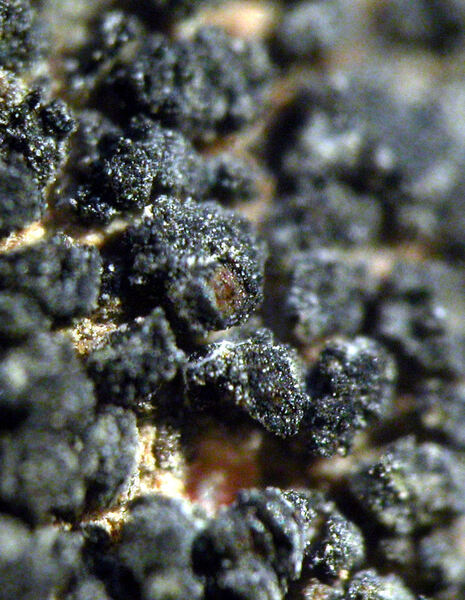
Silvia Ongaro - CC BY-SA 4.0; Owner: Department of Life Sciences, University of Trieste
Herbarium: TSB (30588)
Growth form: Crustose
Substrata: rocks
Photobiont: cyanobacteria, coccaceous (e.g. Gloeocapsa)
Reproductive strategy: mainly sexual
On otherwise dry surfaces with short periods of water seepage after rain
Commonnes-rarity: (info)
Alpine belt: absent
Subalpine belt: absent
Oromediterranean belt: absent
Montane belt: very rare
Submediterranean belt: rare
Padanian area: absent
Humid submediterranean belt: very rare
Humid mediterranean belt: rare
Dry mediterranean belt: rather rare

Predictive model
| Herbarium samples |


P.L. Nimis; Owner: Department of Life Sciences, University of Trieste
Herbarium: TSB (30596)
2001/12/10


P.L. Nimis; Owner: Department of Life Sciences, University of Trieste
Herbarium: TSB (34674)
2002/02/01
a form with pruinose, pseudoisidiate thallus, which probably belongs to another species

Silvia Ongaro - CC BY-SA 4.0; Owner: Department of Life Sciences, University of Trieste
Herbarium: TSB (30588)


